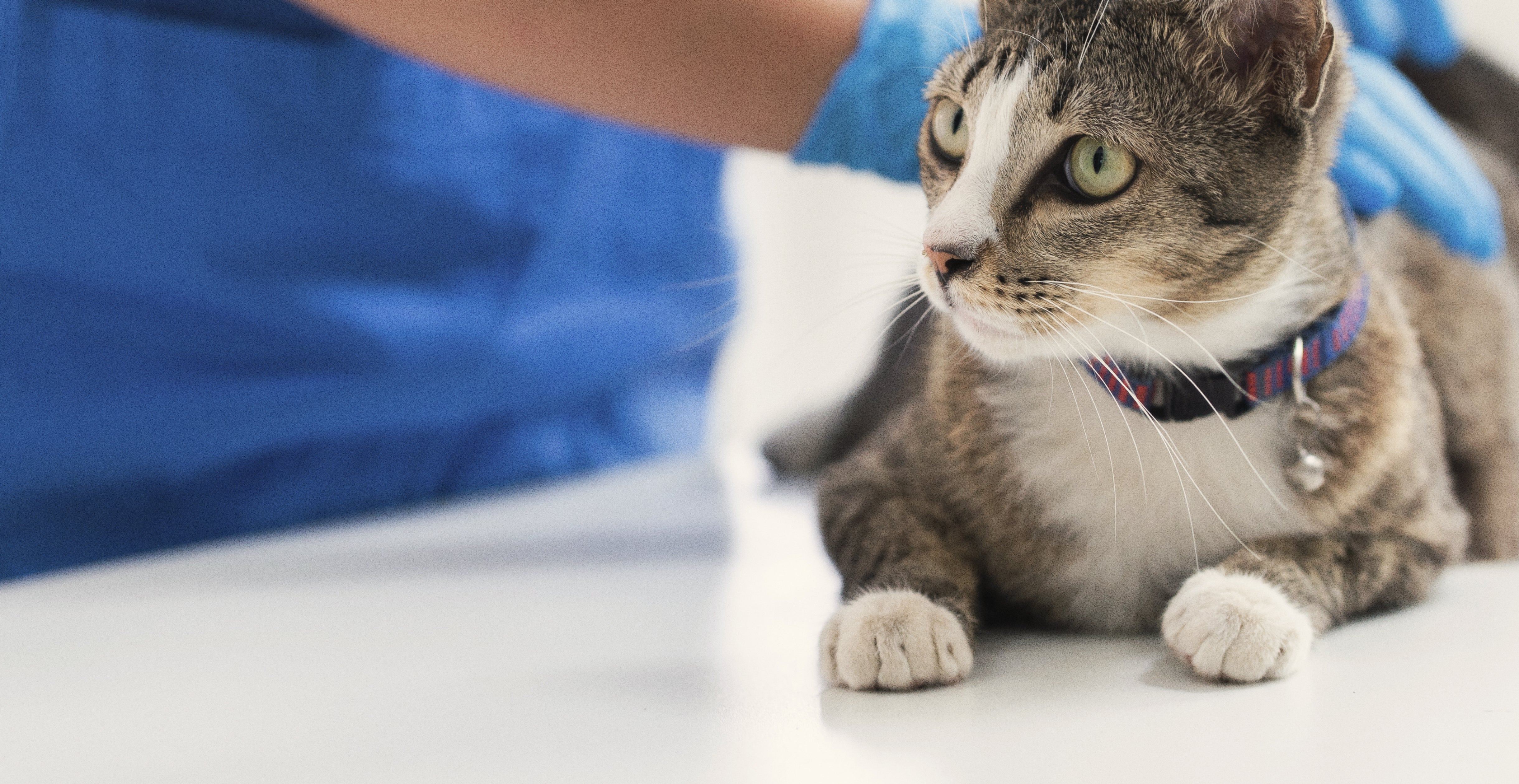As veterinarians, we understand that your pets are cherished family members, and their health remains your top priority. Discovering a tick attached to your beloved cat can certainly be concerning, but with the right knowledge and a calm approach, you can effectively manage this situation. This comprehensive guide covers everything you need to know about how to remove a tick from your cat safely, plus proven prevention strategies that will keep your feline friend protected from these common outdoor hazards.
Summary
Understanding the health risks ticks pose to cats
Tick paralysis: a life-threatening condition
One of the most serious risks you should be aware of is tick paralysis, which is caused by neurotoxins produced in the salivary glands of specific tick species, such as some Ixodes species found in Australia. When these ticks attach and begin feeding, they inject these dangerous toxins that lead to progressive weakness and paralysis, typically starting in your cat's hind legs and moving upward, potentially affecting their breathing.
If you suspect your cat is showing paralysis symptoms after a tick bite, this becomes a veterinary emergency requiring immediate attention.

What diseases can ticks transmit to your cat?
Ticks also transmit tick-borne diseases that can seriously impact your cat's health. Lyme disease, caused by the bacterium Borrelia burgdorferi, is perhaps the most well-known example. While dogs are more commonly affected by Lyme disease, your cat can also develop illness from this infection.
Fortunately, diseases like Lyme typically require the tick to remain attached for 2-3 days before bacteria can transfer to your pet, which highlights exactly why prompt tick removal is so essential. Other dangerous pathogens like Bartonella species can also be transmitted through tick bites, potentially causing fever, lameness, and serious systemic problems if left untreated.
Spotting ticks on your cat's body
Ticks appear as small, oval-shaped bugs that range from pinhead size when unfed to a grape-like appearance when they've become engorged with blood. Their color typically varies from brown to black or grey, making them sometimes difficult to spot against your cat's fur.
Regular tick checks, especially after your cat spends time outdoors in grassy or wooded areas, serve as your first line of defense. You should focus your search on warm, hidden areas where ticks most commonly choose to attach:
around and inside the ears
between the toes
under the armpits
around the tail base
on the face and neck
A thorough "petting down" session, where you gently run your hands over your cat's fur while feeling for any small bumps, will help you detect ticks in their early stages .

Preparing for safe tick removal
Finding a tick on your cat can certainly be alarming, but maintaining your calm is essential for both you and your feline companion. Your cat is highly sensitive to your emotions, and approaching them with anxiety will only increase their stress levels. Knowing how to remove a tick from a cat properly begins with adequate preparation.
Essential supplies for tick removal
You'll need these essential supplies:
Fine-tipped tweezers or a specialized tick removal tool: these represent the safest, most effective options available. You should avoid using matches, nail polish, or petroleum jelly, as these substances can irritate the tick and cause it to release more harmful substances into your cat's bloodstream.
A small, sealable container: filled with rubbing alcohol for safe tick disposal and potential veterinary identification if needed later.
Antiseptic wipes or rubbing alcohol
Protective gloves: to shield yourself from potential pathogens
A quiet, well-lit space: where your cat feels comfortable and free from distractions
Keeping your cat calm during the process
Before you attempt any removal, you must ensure your cat feels as relaxed as possible. You can create positive associations by starting with gentle stroking near the tick's location, gradually moving closer to the affected area. Offering your cat's favorite treats, such as lickable paste, will help distract and reward them throughout this process.
You might also consider gently wrapping your cat in a soft towel with only the affected area exposed, which provides security and helps control unnecessary movement. Having a trusted helper to hold and reassure your cat while you focus entirely on the removal process can prove invaluable.

How to remove a tick from a cat: Step-by-step instructions
Once you've completed your preparation, follow these precise steps for effective tick removal. Learning how to remove a tick from a cat correctly ensures both your safety and your pet's well-being:
Part the fur: you should gently expose the tick and the surrounding skin area.
Grasp the tick firmly: using your tweezers or removal tool, grasp the tick as close to your cat's skin as possible, focusing specifically on the mouthparts rather than the tick's body to minimize the risk of squeezing fluids into your cat or leaving mouthparts behind in the skin.
Pull straight and steady: you need to apply slow, steady upward pressure. You must never twist or jerk the tick, as this action can break off the mouthparts and potentially cause infection or irritation.
Confirm complete removal: carefully check that the entire tick, including both the head and mouthparts, remains intact.
Dispose of the tick properly: immediately place the tick in your sealed container with rubbing alcohol.
Clean the bite site: thoroughly clean the affected area using antiseptic wipes or rubbing alcohol.
Post-removal monitoring and care
When should you contact your veterinarian?
You should contact your veterinarian immediately if you notice any of these concerning signs:
Lethargy or behavioral changes: your cat appears unusually tired, withdrawn, or shows reduced activity levels
Lameness or walking difficulty: these can be potential signs of tick paralysis, especially if the symptoms appear to be progressing
Appetite loss or vomiting: any sudden changes in your cat's eating habits or signs of digestive upset
Fever symptoms: your cat feels warm to the touch or displays other signs of illness
Bite site complications: swelling, redness, or pus that would indicate a possible infection
Your goal should always be to ensure the best possible quality of life for your pet. If you are ever uncertain, we recommend choosing the safest option and contacting your veterinary team. They are your trusted partners in supporting your pet’s ongoing care.
.

Preventing tick infestations in cats
The most effective approach to tick management is prevention, which significantly reduces your cat's risk of contracting tick-borne diseases and developing paralysis. While knowing how to remove a tick from a cat is essential, preventing tick attachment in the first place remains your best strategy.
Year-round parasite protection strategies
Environmental management and routine checks
If your cat spends time outdoors, you can minimize their exposure to tick-heavy environments through proper yard maintenance. Keep your outdoor spaces tidy, mow grass regularly, and remove leaf litter to reduce potential tick habitats around your home. You should continue performing routine physical examinations, especially if you have outdoor cats. Remember that early tick detection significantly reduces the time available for disease transmission.
Just like regular dental care prevents oral health conditions, consistent tick prevention serves as a vital component of your cat's overall health regimen.

Building a partnership with your veterinary team
As veterinary professionals, our primary goal involves empowering you with the knowledge and tools necessary for optimal pet care. We fully understand that managing your pet's health can sometimes feel complex and emotionally challenging. We're here to provide you with evidence-based guidance and support, whether you need routine preventive care or help addressing unexpected health concerns like tick removal.
You should never hesitate to ask us questions, regardless of how minor they might seem to you. Your active participation and open communication prove invaluable in ensuring your cat lives a long, happy, and healthy life as a beloved family member. Mastering how to remove a tick from a cat represents just one aspect of responsible pet ownership that we're here to help you navigate.
The information in this article is based on the following scientific publications:
- Elliott, J., & Grauer, G. (Eds.). (2006-2007). BSAVA Manual of Canine and Feline Nephrology and Urology (2nd ed.). BSAVA Publications.
- Villiers, E., & Blackwood, L. (Eds.). (2005). BSAVA Manual of Canine and Feline Clinical Pathology (2nd ed.). BSAVA Publications, Gloucester
- Horwitz, D. F., & Mills, D. S. (Eds.). (2009). BSAVA Manual of Canine and Feline Behavioural Medicine (2nd ed.). BSAVA Publications, Gloucester
- Harvey, A., & Tasker, S. (Eds.). BSAVA Manual of Feline Practice: A Foundation Manual. BSAVA Publications
- Rendle, M., & Hinde-Megarity, J. (Eds.). (2022). BSAVA Manual of Practical Veterinary Welfare (1st ed.). BSAVA Publications.
Looking for a solution? Start here
Stylla Calmness for cats
Supports relaxation and emotional balance with amino acid-based formulation
- Promotes emotional balance and relaxation
- Helps maintain balanced behaviour
- Supports healthy physiological equilibrium
Made in Switzerland with strict quality standards





